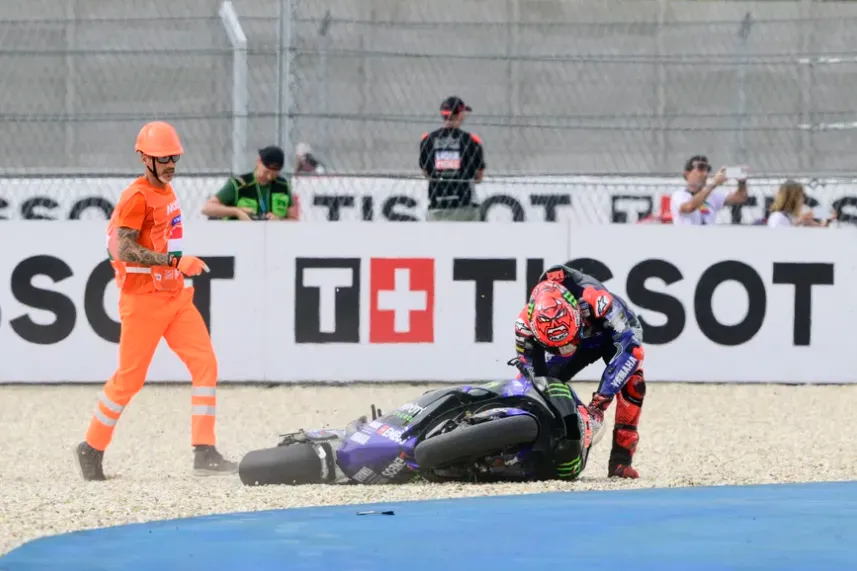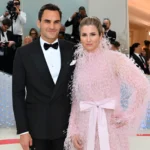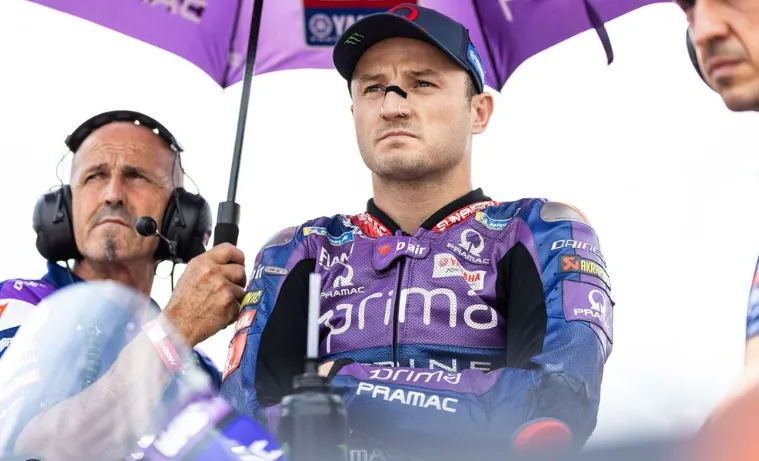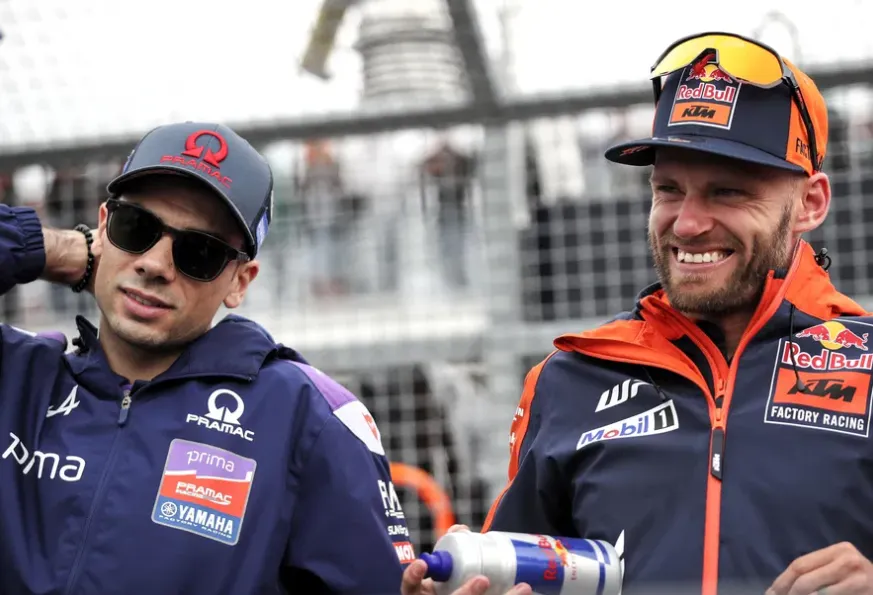

Fabio Quartararo’s Bold Move Leads to Collision in Hungary Sprint
The Hungarian Grand Prix sprint race delivered high drama on Saturday when Fabio Quartararo triggered a dramatic first-corner collision that reshaped the entire contest. The factory Yamaha rider misjudged his braking on the inside line, colliding with Enea Bastianini’s Tech3 KTM, which in turn compromised the races of Marco Bezzecchi and Pedro Acosta.
The mistake was a rare one for the 2021 MotoGP world champion, who is usually praised for his precise judgment and clean racing. Quartararo was subsequently handed a long-lap penalty for Sunday’s main race, a sanction that immediately became one of the most talked-about stories of the weekend.
The Incident: A Costly Misjudgment
The sprint began with chaos as the pack funneled into the tight Turn 1, one of the slowest corners on the calendar after a short but fast run from the starting grid. Quartararo approached aggressively on the inside, carrying too much speed into the braking zone. The result was unavoidable contact with Bastianini, who was left with no space to maneuver.
The chain reaction extended beyond the initial clash, affecting Aprilia’s Marco Bezzecchi and KTM rookie Pedro Acosta, both of whom lost crucial ground in the melee. For Quartararo, it was immediately clear that the stewards would take a dim view of the situation, given that multiple riders’ races were compromised.
Quartararo’s Reaction
Despite the chaos, Quartararo chose not to offer a public display of guilt in his media briefing. Instead, he carefully avoided directly taking responsibility while still acknowledging the outcome. His stance was one of quiet acceptance rather than outright apology, though he did visit Bastianini’s garage after the race to personally extend his regrets.
This private gesture seemed to strike a balance between accountability and maintaining his own composure. For a rider who rarely finds himself in the middle of controversy, it was an unusual situation to navigate.
Riders Defend Quartararo
Interestingly, several riders were quick to defend Quartararo, arguing that such incidents are almost inevitable in the cut-and-thrust environment of a sprint race. Marco Bezzecchi, one of the riders most affected, offered a particularly understanding response.
“It’s something that can happen, I completely understand,” Bezzecchi explained. “It happens to every one of us. It’s normal – we always try to make the best, we try to race to win. And when you have the possibility and you know that the first corner is so crucial, especially at this track, you try obviously to maximise everything. I can’t blame Fabio.”
Bezzecchi’s words highlighted the unique nature of the Hungarian track, where the short run to Turn 1 makes the opening moments especially chaotic. The narrow braking zone forces riders into aggressive choices, and mistakes are often magnified by the sheer closeness of the pack.
Stewards’ Decision: Long-Lap Penalty
Despite the leniency shown by some peers, the MotoGP stewards decided that a penalty was necessary. Quartararo was issued a long-lap penalty for Sunday’s full-distance race. The decision was seen as measured, given that this was his first such offence of the season. The penalty will cost him several seconds during the Grand Prix, making his task significantly harder if he hopes to finish inside the top ten.
The ruling underscored the sport’s commitment to balancing competitiveness with safety. While hard racing is always encouraged, careless or overly aggressive maneuvers that disrupt multiple competitors are consistently penalized.
Bastianini’s Own Penalty
Ironically, Enea Bastianini himself was penalized after the race for a separate incident later on the opening lap. The Italian collided with Johann Zarco, taking the Repsol Honda rider out of the race. Given that it was Bastianini’s second such offence of the season—his first having come at Le Mans against Jack Miller—the stewards issued him a double long-lap penalty for Sunday’s Grand Prix.
This decision further complicated the Hungarian weekend for the Tech3 KTM rider, who is under increasing scrutiny for repeated aggressive errors. For Zarco and Honda, it was another disappointing setback in an already challenging season.
The Bigger Picture for Quartararo
For Fabio Quartararo, the incident came at a delicate moment in his season. The Frenchman has been fighting hard to extract performance from the Yamaha M1, a bike that has struggled to match the raw speed of Ducati, KTM, and Aprilia machinery. His aggressive start in the sprint could be seen as a symptom of frustration, pushing beyond the limits in search of an early advantage.
This aggressive approach reflects a wider issue for Yamaha. Without the straight-line speed and acceleration of its rivals, the M1 often requires riders to take risks in braking zones and corner entries. At a track like Hungary, with its narrow opening turn, such risks can easily backfire.
A Rare Error in a Polished Career
What made Saturday’s incident stand out was just how uncharacteristic it was for Quartararo. Throughout his MotoGP career, he has built a reputation as a clean and calculated rider, rarely involved in controversial clashes. Unlike some rivals who thrive on aggressive elbow-to-elbow racing, Quartararo has preferred precision and consistency.
That’s why many riders, including Bezzecchi, were quick to downplay the seriousness of the collision. They recognized it as an honest mistake rather than reckless intent, one that any rider could make under the unique pressure of a sprint start.
Sunday’s Challenge: Damage Limitation
Heading into Sunday’s main race, the long-lap penalty will add an extra layer of difficulty for Quartararo. While the Hungarian circuit does allow for recovery drives thanks to its technical layout, the time lost in the long lap will likely prevent him from challenging the leaders unless extraordinary circumstances unfold.
For Yamaha, the objective will be damage limitation. Quartararo will need to focus on salvaging as many points as possible, while teammate Franco Morbidelli will also be tasked with bringing the bike home in a respectable position.

Lessons from Hungary
The Hungarian sprint offered a reminder of just how unforgiving MotoGP racing can be. A split-second misjudgment at the start of a race can derail not only a rider’s own performance but also the hopes of several others. For Quartararo, it was a humbling moment, even if his peers were forgiving.
For the championship as a whole, it showed once again that sprints carry a unique intensity. With shorter distances and fewer laps to make progress, riders often gamble aggressively at the start. While this makes for thrilling viewing, it also increases the likelihood of clashes like the one seen in Hungary.
Conclusion
Fabio Quartararo’s collision in the Hungarian sprint race was a rare mistake from a rider who has long been considered one of the cleanest and most calculated on the MotoGP grid. The long-lap penalty he will serve on Sunday is a setback, but it also serves as a reminder of the fine margins that define the sport.
While Bastianini, Bezzecchi, and Acosta were all impacted, the overall mood in the paddock was one of understanding rather than condemnation. Still, the stewards acted decisively to ensure fairness and safety.
For Quartararo, the priority now is to turn this setback into motivation, using Sunday’s race as an opportunity to bounce back. For fans, Hungary once again proved that in MotoGP, anything can happen in the blink of an eye.



















